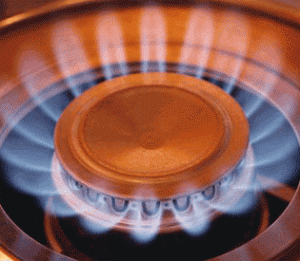 Natural gas increased on Thursday, marking a third consecutive day of gains on projections that incoming cold weather systems will push temperatures below normal.
Natural gas increased on Thursday, marking a third consecutive day of gains on projections that incoming cold weather systems will push temperatures below normal.
Natural gas for delivery in January gained 0.70% to $3.732 per million British thermal units by 9:53 GMT. Prices held in a daily range between $3.745 and $3.696. The energy source gained 1.48% on Tuesday to $3.606.
According to NatGasWeather.com, natural gas demand in the US over the next seven days will be moderate, compared to normal, with a neutral, but becoming slightly colder trend for the December 18 – December 24 period.
The Nor’easter weather system will decrease in strength, but will maintain its presence over New England for the next couple of days. The system will deliver periods of snow and rain, while pushing overnight temperatures below the freezing mark. During the day reading in the region will remain 7-10 degrees below normal.
Temperatures have begun to trend higher as a strong Pacific jet stream arrived into the western US coast yesterday and brought waves of mild weather and very heavy rains. The central and northeastern US will also enjoy warmer that usual temperatures over the weekend, before different weather system flows out of Texas and hits the region with growing areas of rain and snow.
This system will merge with a colder system over southern Canada, the outcome of which will be sudden drops in temperatures over the Great Lakes and interior Northeast.
However, the very cold Arctic air will stay trapped in northern Canada, allowing the majority of the US to remain warmer through December 21, especially over the central US.
Starting December 22-24, temperatures will gradually turn colder as Canadian air moves into the northern US, although it is still early to estimate exactly how cold it will be and how deep it will reach within US territory.
Temperatures
According to AccuWeather.com, temperatures in New York on December 12th will range between 32 and 38 degrees, below the average of 33-44, before reaching the above-seasonal 34-48 on December 16th. Chicago will see readings of 33-38 degrees on December 12th, 2 above normal, before slightly moderating to seasonal 30-36 on December 17th.
Down South, the high in Texas City on December 12th will be 70 degrees, 6 above usual, before falling to 44-63 degrees on December 19th. On the West Coast, today’s temperature in Los Angeles will peak at seasonal 68 degrees, with expectation temperatures to range between 64-69 degrees through the December 13th-18th period.
Supplies
The Energy Information Administration reported on Thursday that US natural gas inventories slid by 22 billion cubic feet in the week ended November 28th, below analysts’ projections ranging between 30 and 50 billion cubic feet. It was also beneath the five-year average gain of 50 bcf and last year’s decline of 141 bcf during the comparable period.
According to NatGasWeather.com this week’s EIA report is expected to bring a draw between 40 to 50 Bcf, which would allow deficits to make up ground on supplies. The EIA is scheduled to release new information later today.
Total gas held in US storage hubs stood at 3.410 trillion cubic feet as of November 28th, narrowing its deficit to the five-year average of 3.782 trillion to 9.8% from 10.4% during the preceding seven days. Stockpiles were also 6.2% below the year-ago level of 3.637 trillion cubic feet.
The East Region saw a net withdrawal of 34 bcf to 1.830 trillion and was 9.1% below the five-year average, while inventories at the West Region rose by 1 bcf to 478 bcf and were 8.4% behind average levels. Stockpiles in the Producing Region rose by 11 bcf to 1.102 trillion, trailing the average by 11.6%.
Pivot Points
According to Binary Tribune’s daily analysis, January natural gas futures’ central pivot point stands at $3.685. In case the contract penetrates the first resistance level at $3.764 per million British thermal units, it will encounter next resistance at $3.822. If breached, upside movement may attempt to advance to $3.901 per mBtu.
If the energy source drops below its first support level at $3.627 per mBtu, it will next see support at $3.548. If the second key support zone is breached, the power-station fuel’s downward movement may extend to $3.490 per mBtu.





